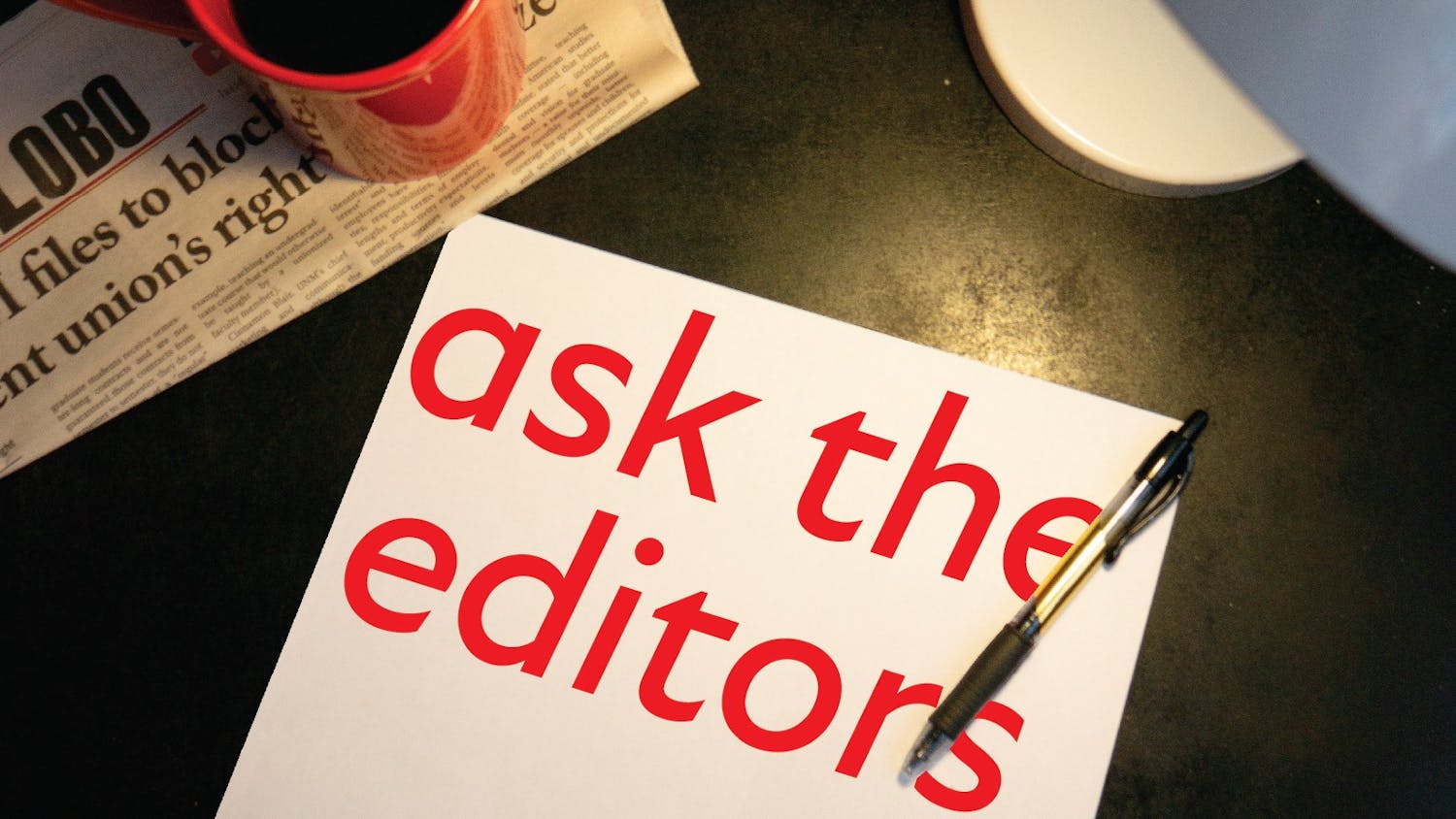Sunday’s protest in Albuquerque brought attention to the long-standing problem of police violence and stirred public debate on protest methods.
Protesters blocked surface roads and highways, occupied the entrances and rooftops of police buildings, climbed traffic lights to dislocate street signs and made necessary the overtime efforts of the Albuquerque Police Department, Bernalillo County Sheriff’s Office, Rio Rancho Police Department, New Mexico State Police and the New Mexico National Guard.
Critics claim that this unruly behavior detracted from the protesters’ cause by disrupting the lives of fellow citizens and requiring costly public services to contain the outrage. Albuquerque Mayor Richard Berry said, “they’ve taken it far beyond a normal protest.”
But what is a “normal” protest?
A “normal” protest is quiet and peaceful and small and invisible — and therefore obsequious to the powers that be.
Families of victims and citizen groups such as the Martin Luther King Jr. Memorial Center have been holding small, orderly demonstrations and vigils against police violence for the last several years. Nobody noticed.
The protest of March 30 was different. It was unruly and disruptive. It demanded attention. And this unruliness is what made it worthwhile.
Protest movements are made up, almost by definition, of relatively powerless groups. If these folks had any sway within the halls of government, then they would not require recourse in the streets.
The official political system privileges those with money and authority, and disadvantages those on the outside. As a way to counteract this power differential, aggrieved groups have to take away the home field advantage of those in — or with access to — office. This means taking the political fight from the closely guarded council chamber to the accessible and plainly visible public square.
This also means making those in power uncomfortable. It means disrupting the status quo, the way things are at the moment. For it is the status quo within which officials enjoy advantage. The mayor and the police department benefit from the status quo. By upsetting social order, protesters destabilize the political order. No wonder the mayor is calling for a “normal” protest.
Protest movements gain influence via disruption. The more benignly movements act, the more secure those in power feel, and thus the less attention they pay to movements’ grievances. Movements must puncture the social and political order if they want to be reckoned with.
Movements also have no choice but to also disrupt the quotidian lives of the bystanding public. Blocking traffic inconveniences fellow citizens in their commutes. But without mild discomfort across the citizenry, officials remain at ease. In order to make their impact felt in the halls of power, movements must discomfit the constituencies in whose name power is wielded.
Get content from The Daily Lobo delivered to your inbox
Generalized disruption has other salutary effects, too. Disruption of social order brings media attention. Previous well-behaved demonstrations did not even gain mention in the back pages of the Albuquerque Journal. The unruly approach of March 30 was featured on the front page above the fold, not to mention that it garnered articles from national and international news outlets such as CBS and the BBC.
Disruptive protest also gains the attention of heretofore neutral citizens on the sidelines. Because their daily routines and environs are upended, they are forced to reckon with the movement and its discontents. Disruption spreads awareness of movements’ grievances.
Unruly protest also raises the cost of official malfeasance. In Albuquerque, the political and police establishment have been made aware that further abridgment of citizen rights will carry with it the punishing mechanism of ever more disruptive and costly protest. It becomes clear that disruptive protest can serve as a negative inducement to the powers that be.
Unruliness also demonstrates that people collectively can make an impact. Exhibiting collective empowerment can awaken the jaded and the cynical from their dormant civic life. Collective action has a magnetism that draws previously passive people in to a new assertive way of being citizens.
Many of Sunday’s protest participants were not present at the noon kickoff. Rather, they came across the march and joined it midway through. When UNM sent a mass text to warn all students about the protesters and the police, instead of seeking shelter, many curious students poured outside to witness and take part in the action.
The demonstration effect of a rowdy uprising attracted bystanders. This snowball effect would be far less probable with a peaceful and orderly vigil. People want to take part in collective action most of all when they see the effort has potency; that their investments of time and energy and emotion have the potential to result not just in expression, but in influence.
Probably the single biggest accomplishment of the Occupy movement was to show people that social movements are not an anachronistic relic from the bygone radical ‘60s, but a real possibility for promoting social change here and now.
The protests against police violence have the same potential for demonstrating that people power is possible when citizens act collectively. The unruliness grabs attention and alerts people to their latent powers of change.
The vision of a chaotic procession down Central Avenue showed people that there are many opportunities for engaging in politics besides tick-marking a ballot every two years.
Welcome to the new normal.





